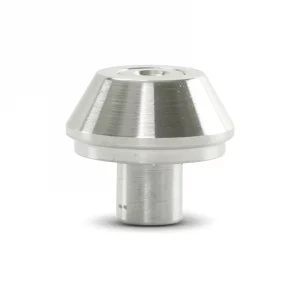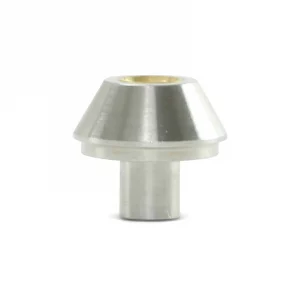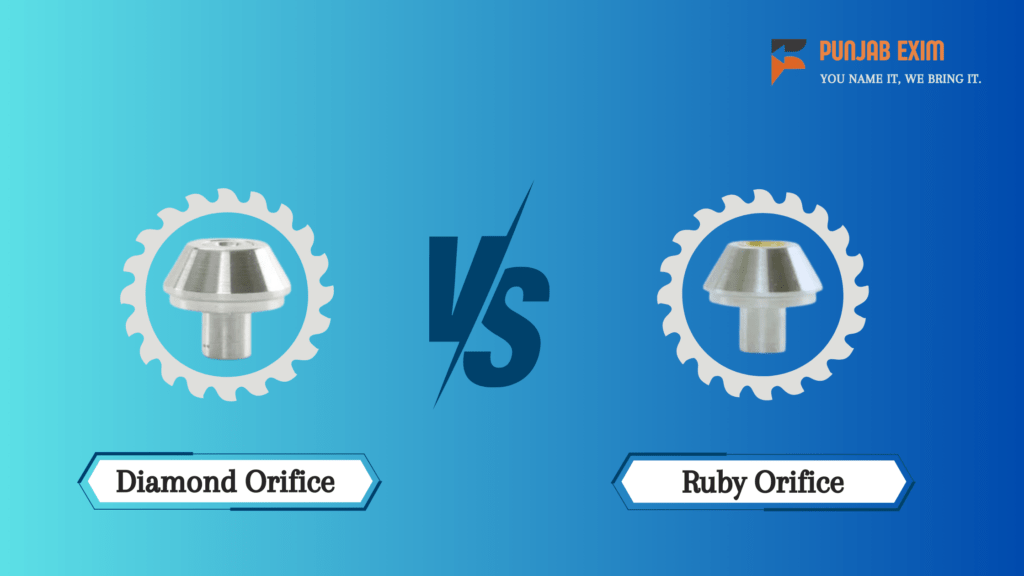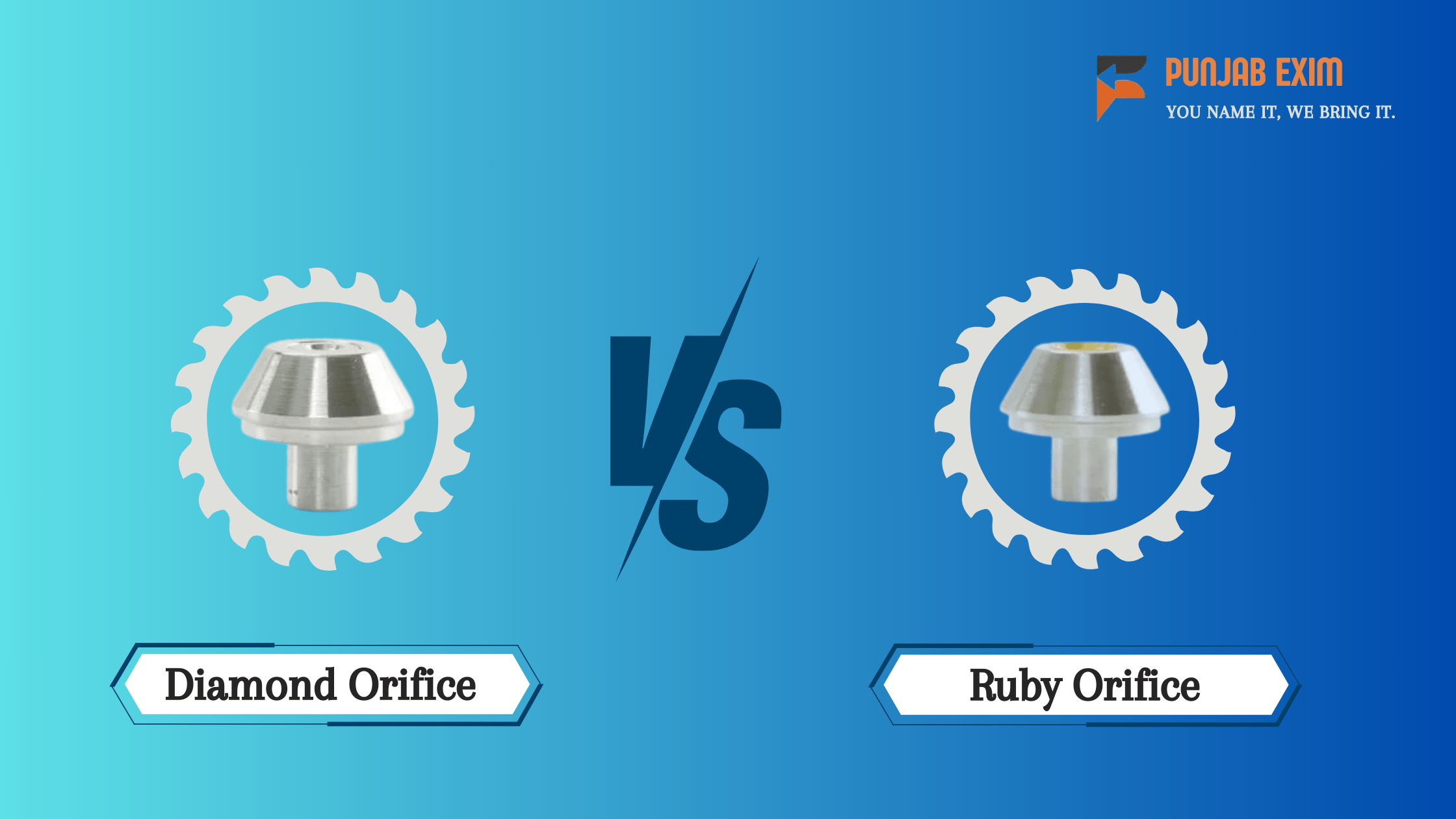In the realm of waterjet cutting, the selection between a diamond orifice and a ruby orifice, or in other words the debate between a diamond orifice vs ruby orifice in waterjet cutting is a pivotal decision that hinges on a multifaceted interplay of factors, each playing a crucial role in shaping the overall cutting performance. This intricate choice involves careful consideration of elements such as cost, cutting precision, and durability, all of which contribute to the effectiveness and efficiency of the waterjet cutting process. Let’s have a close look at them.
Diamond Orifice in Waterjet Cutting
Delving into the characteristics of diamond orifices in waterjet cutting illuminates the unique qualities that set them apart as a cutting-edge choice.
1) Material used in Diamond Orifice
Diamond orifices distinguish themselves with a construction material sourced from synthetic diamonds, renowned for their exceptional hardness. This hardness attribute is a defining characteristic significantly influencing the orifice’s performance in waterjet cutting applications.
2) Durability of Diamond Orifice
Diamonds, celebrated for their inherent toughness, impart remarkable durability to diamond orifices. This quality allows them to withstand the abrasive nature of cutting materials for extended durations, exhibiting minimal wear and maintaining their cutting efficacy over time.
3) Precision
Precision is paramount in waterjet cutting processes, and diamond orifices excel in delivering high levels of precision. The hardness of synthetic diamonds translates into exceptional resistance to wear, ensuring that the orifice maintains its sharpness and cutting accuracy, making it an ideal choice for applications demanding intricate detailing and fine cuts.
4) Cost
While diamond orifices offer superior durability and precision, they are typically associated with a higher cost compared to alternatives like ruby orifices. The cost consideration becomes a crucial factor for businesses aiming to balance the advantages of diamond orifices with budget constraints.
In essence, the selection of diamond orifices in waterjet cutting hinges on their unmatched hardness, durability, precision, and willingness to invest in cutting-edge technology. Businesses seeking the pinnacle of cutting performance may find the benefits of diamond orifices well worth the associated cost, especially in applications where durability and precision are non-negotiable factors.

Looking for a Catalog of Diamond Orificies? Click: Catalog of Diamond Orifices
Ruby Orifice in Waterjet Cutting
Exploring the distinct attributes of ruby orifices in the context of waterjet cutting unveils a set of characteristics that make them a noteworthy alternative.
1) Material
Ruby orifices are crafted from synthetic sapphire, commonly recognized as ruby. This choice of material contributes to their unique properties, setting them apart from other orifice types.
2) Durability
Although not as hard as their diamond counterparts, ruby orifices boast commendable durability. Their ability to withstand abrasive materials in waterjet cutting showcases a resilience that, while not on par with diamonds, remains robust enough for many cutting applications. This durability ensures extended performance in challenging cutting environments.
3) Precision
Ruby orifices deliver good precision in the cutting process. While they may not match the unparalleled hardness of diamond orifices, they still provide accurate and efficient cutting. It’s important to note that, depending on the application, ruby orifices may experience a slightly quicker rate of wear compared to diamonds, which may influence their long-term precision.
4) Cost
One of the notable advantages of ruby orifices lies in their cost-effectiveness. Generally more affordable than diamond orifices, the economic factor makes ruby orifices an attractive choice for businesses seeking a balance between performance and budget considerations.
In summary, the use of ruby orifices in waterjet cutting showcases a thoughtful selection of materials that combines durability, precision, and cost-effectiveness. Businesses looking for reliable cutting performance in less abrasive applications may find ruby orifices to be a pragmatic and economical choice, providing an optimal balance between efficiency and cost considerations.

Looking for a Catalog of Diamond Orificies? Click: Catalog of Ruby Orifices
Considerations
- If precision and long-term durability are top priorities and cost is not a significant concern, a diamond orifice may be preferred.
- If cost is a primary consideration and the application allows for more frequent replacements, a ruby orifice might be a suitable choice.
Here we have presented clear-cut considerations that we should keep in mind while opting between these two. Note that your decision should be based solely on your priorities.

Conclusion of the debate diamond orifice vs ruby orifice in waterjet cutting
In conclusion, the debate of diamond orifice vs ruby orifice in waterjet cutting concludes on a thoughtful evaluation of advantages and trade-offs. The decision hinges on the unique requirements of the cutting application, where factors like budget constraints, precision demands, and the nature of the materials being cut play pivotal roles. By carefully weighing these considerations, businesses can make a strategic choice that optimizes performance, aligns with budgetary considerations, and ensures the successful execution of their waterjet cutting processes.
If you liked our small effort in bringing purchase time considerations. Please Follow our LinkedIn Page so that you get notified about our recent posts ahead of all.
Visit Our Page: https://punjabexim.com
Also read: https://punjabexim.com/htoriginal-vs-aftermarket-consumables-fabrication/
Know more about Waterjet Cutting: https://accustream.com/
FAQs
Does an orifice change the flow rate?
How precise is waterjet cutting?


